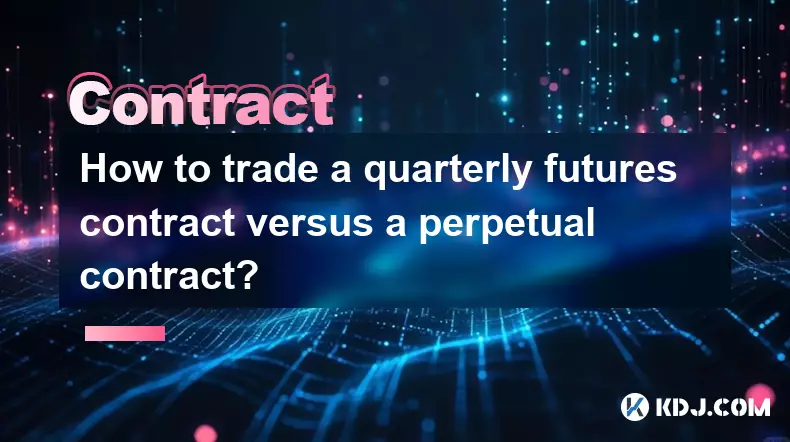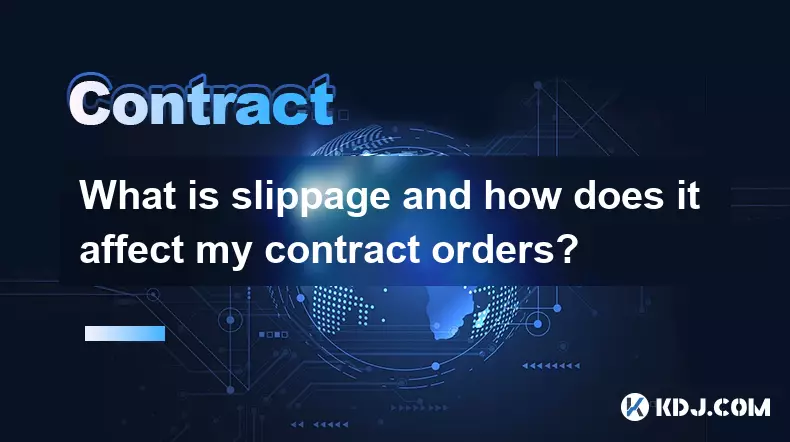-
 bitcoin
bitcoin $102877.190955 USD
1.88% -
 ethereum
ethereum $3430.435064 USD
4.52% -
 tether
tether $0.999264 USD
-0.05% -
 xrp
xrp $2.307310 USD
4.49% -
 bnb
bnb $987.740692 USD
3.82% -
 solana
solana $161.947760 USD
3.97% -
 usd-coin
usd-coin $0.999712 USD
-0.05% -
 tron
tron $0.292810 USD
2.93% -
 dogecoin
dogecoin $0.179738 USD
10.70% -
 cardano
cardano $0.580716 USD
8.75% -
 hyperliquid
hyperliquid $42.463448 USD
8.40% -
 chainlink
chainlink $15.763437 USD
7.05% -
 zcash
zcash $649.595636 USD
17.21% -
 bitcoin-cash
bitcoin-cash $511.610261 USD
7.19% -
 stellar
stellar $0.292537 USD
7.91%
Why Did My Cardano (ADA) Stop-Loss Order Trigger at the Wrong Price?
Stop-loss orders in crypto trading, like for Cardano (ADA), may trigger at unexpected prices due to mark price vs. market price differences, slippage, or exchange-specific mechanics.
Oct 29, 2025 at 12:00 pm

Understanding Stop-Loss Mechanics in Crypto Trading
1. A stop-loss order is designed to limit an investor's loss on a cryptocurrency position by automatically selling the asset when it reaches a specified price. In the case of Cardano (ADA), this mechanism operates within the framework of the exchange platform being used. Different exchanges implement stop-loss triggers based on varying data sources, such as last traded price, bid/ask spread, or index pricing.
2. Some platforms use mark price instead of the actual market price to prevent premature liquidation due to short-term price spikes or flash crashes. The mark price is typically derived from a composite of external price feeds and may differ from the real-time trading price visible on the order book. If your ADA stop-loss was triggered based on the mark price rather than the spot price, that could explain the discrepancy.
3. Slippage can also play a significant role, especially during periods of high volatility. When ADA experiences rapid price movements, the execution price might deviate significantly from the intended stop-loss level. This occurs because there may not be enough buy-side liquidity at the exact trigger price, forcing the system to fill the sell order at the next available rate.
4. Market gaps are common in crypto markets due to their 24/7 nature and decentralized structure. Unlike traditional financial markets with circuit breakers, digital assets like ADA can jump between price levels without trading at intermediate values. If ADA dropped sharply overnight or during low-liquidity periods, your stop-loss could have executed far below your set point.
5. Certain exchanges offer different types of stop-loss orders—such as stop-market, stop-limit, or trailing stops—each behaving differently under market stress. A stop-market order turns into a market order once triggered, which guarantees execution but not price. If you used this type, the final sale price might be noticeably worse than expected during fast-moving conditions.
Exchange-Specific Factors Influencing ADA Orders
1. Each crypto exchange maintains its own matching engine and risk management protocols. Platforms like Binance, Kraken, or Coinbase may calculate stop-loss triggers using proprietary algorithms that incorporate time-weighted average prices or third-party oracle data. These backend systems are not always transparent, making it difficult for traders to predict exact execution points.
2. Order book depth for ADA varies across exchanges. On smaller platforms, thin order books mean fewer buyers at each price level. If your stop-loss activated during a sudden sell-off, even a moderate-sized order could exhaust available bids quickly, resulting in unfavorable fills.
3. API latency or connectivity issues between your trading interface and the exchange server can delay order transmission. Even a few seconds’ delay during volatile swings can cause your stop-loss to trigger at a less favorable price than anticipated. This is particularly relevant when using third-party bots or mobile apps with unstable connections.
4. Some exchanges apply filters or minimum tick sizes that adjust how close a stop-loss can be placed relative to current market value. If your ADA stop was too close to the prevailing price, the system might have modified or rejected it silently, leading to unexpected behavior when volatility spiked.
Exchanges may also batch process orders during extreme volatility, meaning multiple stop-losses execute simultaneously after a delay, compounding slippage and widening the gap between expected and actual fill prices.How Price Feeds Impact Your ADA Trade Execution
1. Many advanced trading platforms rely on external price oracles to determine when to activate stop-loss orders. For ADA, these oracles aggregate data from multiple exchanges to compute a fair market value. If one of those sources reports anomalous pricing due to local imbalances or technical glitches, it can influence the trigger point independently of what you observe on your primary exchange.
2. Time delays in price feed updates can create mismatches. Oracle systems often include safeguards against manipulation, such as heartbeat intervals or deviation thresholds. During sharp moves in ADA’s price, these mechanisms may lag, causing your stop-loss to activate later—and at a worse rate—than intended.
3. Decentralized exchanges (DEXs) and certain centralized platforms use on-chain price discovery models tied to automated market maker (AMM) pools. If ADA’s liquidity pool on such a platform experiences imbalance, the reference price used for stop-loss calculation may diverge substantially from mainstream CEX prices.
4. Arbitrage inefficiencies across global markets contribute to temporary price disparities. While arbitrageurs usually correct these quickly, during network congestion or regulatory shocks, discrepancies can persist long enough to affect stop-loss triggers linked to multi-source indices.
Traders must verify whether their chosen platform uses a single-exchange price source or a blended index, as this decision directly affects the reliability and timing of ADA stop-loss activation.Frequently Asked Questions
What is the difference between mark price and last traded price in ADA trading?Mark price is an estimated fair value of ADA calculated using external benchmarks to avoid manipulation, while the last traded price reflects the most recent transaction on a specific exchange. Stop-loss orders often use mark price to prevent exploitation during flash crashes.
Can I avoid slippage when setting a stop-loss for my ADA holdings?Slippage cannot be fully eliminated, especially during high volatility. Using a stop-limit order instead of a stop-market order allows control over the minimum acceptable price, though it risks non-execution if liquidity dries up.
Why did my stop-loss execute even though ADA never showed that price on the chart?Charts often display candlestick closes or averages over time intervals. Individual trades or bid/ask breaches at your stop level may not appear clearly on standard charts, yet they are sufficient to trigger automated orders.
Do all exchanges handle ADA stop-loss orders the same way?No. Each exchange implements its own logic for order triggering, price sourcing, and execution. Reviewing the platform’s documentation on risk controls and order types is essential before placing critical trades.
Disclaimer:info@kdj.com
The information provided is not trading advice. kdj.com does not assume any responsibility for any investments made based on the information provided in this article. Cryptocurrencies are highly volatile and it is highly recommended that you invest with caution after thorough research!
If you believe that the content used on this website infringes your copyright, please contact us immediately (info@kdj.com) and we will delete it promptly.
- BlockDAG, Avalanche, Dogecoin: Crypto's Leading Trio in 2025
- 2025-11-07 22:05:01
- Layer 2 Coins: Will There Be a Potential Explosion by 2026?
- 2025-11-07 16:50:02
- Filecoin, ICP, and the AI Infrastructure Renaissance: Is History Repeating?
- 2025-11-07 16:50:02
- Bitcoin's Wild Ride: Surges, Zeros, and the Search for Stability
- 2025-11-07 17:05:01
- XRP, Bitcoin, and the Rally: What's the Deal, New York?
- 2025-11-07 17:25:01
- Filecoin, DePIN, and a Technical Breakout: What's the Buzz?
- 2025-11-07 17:05:01
Related knowledge

What are flash loans and how do they allow for uncollateralized borrowing?
Nov 08,2025 at 10:39am
Understanding Flash Loans in Decentralized Finance1. Flash loans represent a novel innovation within the decentralized finance (DeFi) ecosystem, enabl...

How to trade a quarterly futures contract versus a perpetual contract?
Nov 06,2025 at 06:44am
Understanding the Core Differences Between Quarterly and Perpetual Contracts1. Quarterly futures contracts have a fixed expiration date, typically set...

How to understand the liquidation engine for a crypto contract?
Nov 06,2025 at 09:05am
Understanding the Role of Liquidity Pools in Decentralized Finance1. Liquidity pools are foundational components within decentralized exchanges (DEXs)...

How to use a demo account to practice trading contracts?
Nov 06,2025 at 08:55am
Understanding the Purpose of a Demo Account in Contract Trading1. A demo account allows traders to simulate real market conditions without risking act...

What is slippage and how does it affect my contract orders?
Nov 06,2025 at 05:14am
Understanding Slippage in Cryptocurrency Trading1. Slippage refers to the difference between the expected price of a trade and the actual price at whi...

How to report crypto contract gains on my taxes?
Nov 06,2025 at 06:20pm
Tax Classification of Cryptocurrency Gains1. Cryptocurrency contract gains are typically treated as capital gains in most jurisdictions, including the...

What are flash loans and how do they allow for uncollateralized borrowing?
Nov 08,2025 at 10:39am
Understanding Flash Loans in Decentralized Finance1. Flash loans represent a novel innovation within the decentralized finance (DeFi) ecosystem, enabl...

How to trade a quarterly futures contract versus a perpetual contract?
Nov 06,2025 at 06:44am
Understanding the Core Differences Between Quarterly and Perpetual Contracts1. Quarterly futures contracts have a fixed expiration date, typically set...

How to understand the liquidation engine for a crypto contract?
Nov 06,2025 at 09:05am
Understanding the Role of Liquidity Pools in Decentralized Finance1. Liquidity pools are foundational components within decentralized exchanges (DEXs)...

How to use a demo account to practice trading contracts?
Nov 06,2025 at 08:55am
Understanding the Purpose of a Demo Account in Contract Trading1. A demo account allows traders to simulate real market conditions without risking act...

What is slippage and how does it affect my contract orders?
Nov 06,2025 at 05:14am
Understanding Slippage in Cryptocurrency Trading1. Slippage refers to the difference between the expected price of a trade and the actual price at whi...

How to report crypto contract gains on my taxes?
Nov 06,2025 at 06:20pm
Tax Classification of Cryptocurrency Gains1. Cryptocurrency contract gains are typically treated as capital gains in most jurisdictions, including the...
See all articles





















![The Graph Price Prediction [GRT Crypto Price News Today] The Graph Price Prediction [GRT Crypto Price News Today]](/uploads/2025/11/07/cryptocurrencies-news/videos/690d4df44fe69_image_500_375.webp)



















































